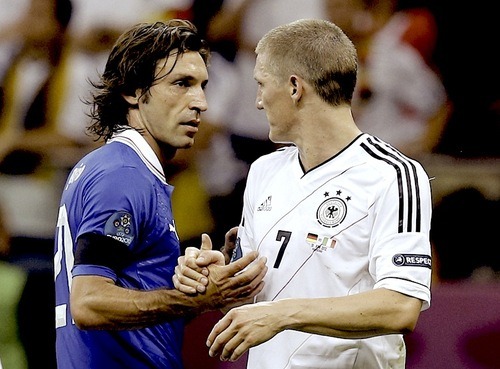Recently on the StatrCast we tried to explain the importance of the CDM to Jimi, explaining why the position is super important at the top and how – as football tactics have evolved – the role of the defensive midfielder has grown to be one of the most important on the field. These players, often operating quietly but efficiently, are tasked with disrupting opposition plays, recycling possession, and controlling the tempo. Long gone are the days when midfielders were primarily seen as backup players to the forwards. Today, they are the heartbeat of their teams, balancing both offensive support and defensive security. Players like Rodri, Palhinha, Fabinho and Kante (who has heavily inspired StatrDraft from our early days) embody a new era where defensive midfielders are crucial strategists, dictating how and when their team attacks or defends. Remember Claude Makelele? So good they literally named the position after him, Aka the Makelele Role as Mourinho put it.

When it comes to the CDM they aren’t sexy but impact goes beyond statistics even though their stats are nuts. Recent recognition like Rodri’s Ballon d’Or shows that even the most subtle contributions are gaining recognition.
The Growing Influence of Defensive Midfielders
A strong defensive midfielder can transform a team’s performance by shielding the defence, maintaining shape, and initiating attacks. A skilled defensive midfielder is often the difference between an average and elite team. Their influence stretches beyond just breaking up play—today’s elite defensive midfielders are multidimensional players capable of pinpoint passes, strategic pressing, and leading the team’s movement both with and without the ball, they maintain the team’s shape, instigate counter-attacks, and manage possession basically these boyos are the heartbeat of their teams,. The recent Ballon d’Or recognition of Rodri marks an acknowledgment of the tactical brilliance and discipline required in this position.
The position is essential in both controlling the game and giving forwards the freedom to push forward. Sure Haaland is a world class goal getter but look what has happened to his goalscoring form since Rodri’s injury, in the best sense the goal getters can’t do their job without the guys behind them pulling the strings.
Key Stats Reflecting Their Impact:

- Rodri (Manchester City): Averaged 90+ passes per game with a 92% accuracy rate, completing over 1,000 passes illustrating his control in possession. Recorded over 250 recoveries last season, showing his defensive acumen.

- Palhinha (Ex – Fulham, Now Bayern): Led Europe’s top leagues with 147 tackles, demonstrating his disruptive presence and work rate in midfield.

- Fabinho (Formerly Liverpool, Now Al-Ittihad)): Averaged 3.4 tackles and interceptions per game at his peak in the Premier League, solidifying Liverpool’s defensive structure.

- Gravenberch (Liverpool): Known more for his versatility, under Slot he has slowly become a different iteration of the CDM, where he offers an average of 2.1 successful dribbles per game, a unique trait among defensive mids, contributing to attacking buildup and advancing play.
Different Types of Defensive Midfielders
While the defensive midfielder role is often seen as a single position playing in either a single pivot or double pivot depending on whether its the three man midfield commonly seen in Pep ball versus a double pivot which epitomised Southgate’s England tenure by playing 2 sitters. Basically it depends on who they are and what they are good at which would be one of several different styles and archetypes, each bringing unique strengths to the game. Despite sharing core responsibilities, defensive midfielders often specialize in different styles, each adding a unique strategic dimension to their teams and no title winning team has ever got over the line without that quality in the engine room. So let’s look at some of the different types because while they play in the same position there is a biiiiig difference in how Pirlo and Kante played the game:

- The Ball-Winner
Examples: João Palhinha, Claude Makelele, N’Golo Kanta, Gennaro Gattuso, Casemiro
These players excel in breaking up opposition play through tackles, interceptions, and positional awareness. Paulinha’s high tackle count is a modern example of this type, while Claude Makelele and Gattuso famously defined the role, setting the standard for this gritty, no-nonsense style. Their primary function is disruption, relentless pressure and tactical fouling, traits that kept opponents from building momentum ensuring that attacks are cut short before they reach the backline. - The Deep-Lying Playmaker
Examples: Andrea Pirlo, Sergio Busquets, Ryan Gravenberch, Paul Scholes
This type of midfielder uses their technical skills and vision to control the game from deep positions, often initiating attacks with long, accurate passes. Andrea Pirlo exemplified this role, using his passing range to split defences. Busquets could turn on a penny and get THAT Barcelona team playing and Gravenberch brings a similar calmness, able to pivot from defence to offense, often leading in key passes and ball retention. These Playmakers often become the team’s primary distributors, setting up plays and controlling tempo. - The Box-to-Box Warrior
Examples: Roy Keane, Patrick Vieira, Steven Gerrard
These players are a blend of defensive grit and offensive drive, known for covering every inch of the field. Keane and Vieira were the ultimate competitors, excelling in tackles but equally capable of scoring goals or making decisive forward passes, even though the might be more known for they’re tackling skills later in their careers whereas Gerrard would have been known as the original Roy of the Rovers style middy . They bring a blend of aggression and finesse, creating a strong midfield presence that often lifts the entire team, these lads were the definition of the midfield general. - The Modern Regista
Examples: Rodri, Fabinho, Joshua Kimmich
Sexy word regista, toss that into a ball conversation and you’ll look like a proper gaffer. Combining elements of the ball-winner and playmaker, the regista operates as a tactical linchpin. Rodri’s balance of passing accuracy and defensive awareness places him here; he is both a shield and a strategist, able to dictate tempo and disrupt attacks. Kimmich and Fabinho also fit this mold, with Kimmich particularly known for his tactical intelligence and precision passing. Registas are versatile, able to adapt based on the game’s demands, making them indispensable in flexible formations. These players can often switch between roles depending on the game’s demands, making them invaluable assets.

Defensive Midfielders: Essential to the Modern Game
In modern football, where tactical formations are constantly evolving, defensive midfielders play an essential role in team balance. With their ability to read the game, disrupt play, and initiate attacks, they allow more creative players the freedom to push forward while securing the team’s defensive structure. Their positioning, and football intelligence are essential for success at the highest levels while teams without a strong defensive midfielder often struggle with control and stability, Manchester United and Tottenham spring to mind, while it’s been remarkably clear why Declan Rice cost Arsenal a small fortune which just over a year later looks like money well spent.
At Statrdraft, we reward these contributions through position-specific metric by awarding points for tackles, interceptions, passing accuracy, and recoveries, highlighting the value of players who keep the game under control. From Makelele to Rodri, the defensive midfielder has transformed into football’s ultimate strategist, showing that the path to victory is often paved by those who rarely make the headlines but always make a difference.
Their importance is ever-growing, proving that games are won and lost not just in front of goal, but also in the battles of midfield.


Comments are closed